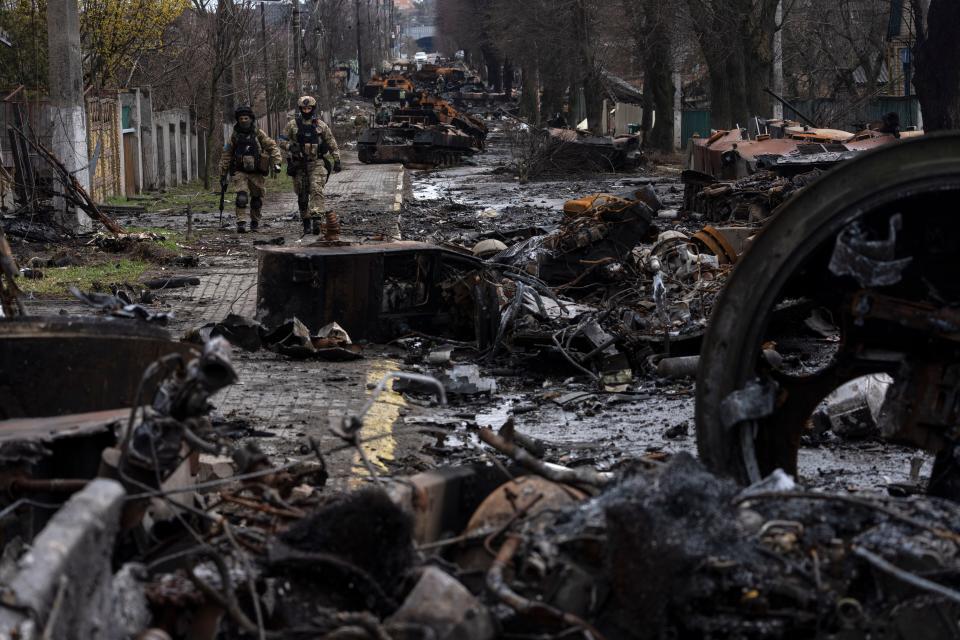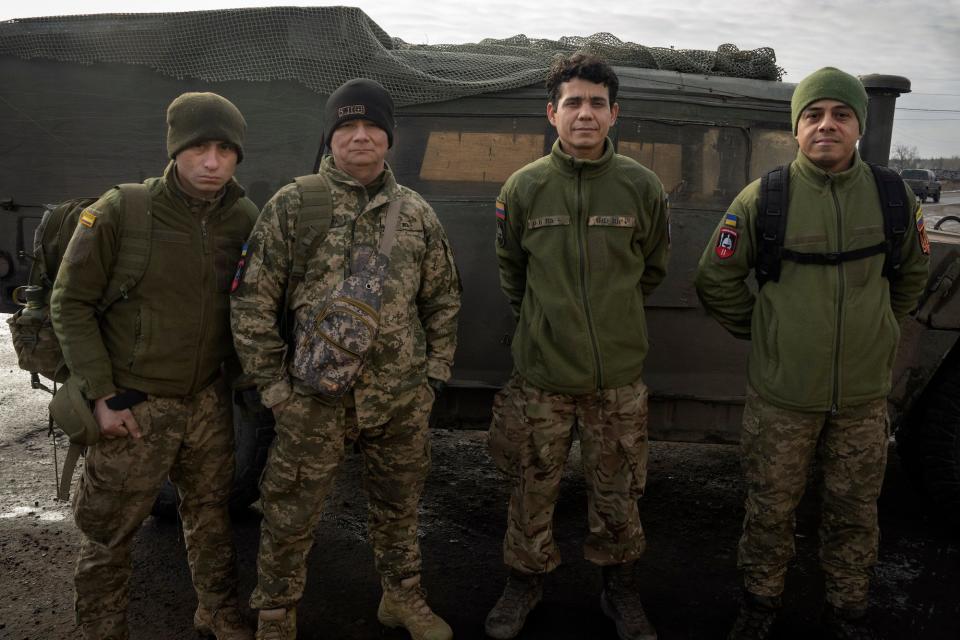-
Ukraine’s International Legion was born in 2022, a home for foreigners eager to fight Russia.
-
Ukraine said 20,000 signed up, though experts said 4,000 was a more realistic peak figure.
-
In 2024, the legion is depleted by years of harsh reality and casualty rates extreme even for Ukraine.
Three days after Russia’s full-scale invasion of Ukraine in 2022, President Volodymyr Zelenskyy issued a clarion call for “friends of peace and democracy” to join the fight from abroad.
Zelensky’s International Legion of Territorial Defense of Ukraine (ILDU) was born, echoing the International Brigades that fought fascism in the Spanish Civil War of the 1930s.
Many answered. Outside Ukraine’s embassy in London Business Insider found men lining up to serve.
“If they need to shove a rifle in my hands and put me on the front, then that’s what they need to do,” said one, a nightclub worker.
“It’s better than sitting with my thumb up my ass.”
The Legion emerged from these recruits — some with military experience, some without.
It has been deployed across the front lines in some of the war’s toughest battles, where any of its members died.
Carl Larson, a US veteran who served in Iraq, spent three months fighting around Ukraine’s eastern city of Kharkiv in the summer of 2022. He told BI his comrades’ motivations were mixed.
“Many of us were there for the right reasons, to defend democracy,” he said.
“Lots of others,” though, “were there for the wrong reasons: adrenaline junkies, people looking for a surrogate family, or because they had personal problems back home.”
Studies from in July and September last year by the London-based Royal United Services Institute (RUSI) reached a similar conclusion.
Some parleyed their postings into fame on social media, issuing impassioned dispatches from the war zone.
BI’s coverage of the International Legion since its inception found that recruits were a mixed bag of qualified veterans, glory-seekers and people trying to give their often chaotic live meaning but totally unsuitable for a military role in a war zone.
In one case, a Legion volunteer from Alabama even defected to Russia.
Some volunteers barely lasted a week. A Russian missile strike in March 2022 hit a base near Lviv being used for foreign fighters.
According to Ukrainian officials, dozens of Ukrainians were killed and more than 100 foreign volunteers injured, ending their campaigns before they began.
Marco Bocchese, assistant professor of international relations at Webster Vienna Private University and an author of the September RUSI study, called the attack a “watershed moment” for many foreign volunteers.

Ukraine originally said 20,000 foreign volunteers had signed up to fight. Bocchese told BI that this figure was “pure propaganda.”
In January last year, The Washington Post estimated that the figure was likely closer to 3,000.
Four experts contacted for this report estimated the May 2024 strength of the legion at between 1,000 and 2,000.
Some foreigners have found other homes in the Ukrainian military: in the intelligence services, or in separate Ukrainian units, such as the elite Chosen Company — a reconnaissance and assault unit composed of US and Australian volunteers within the 59th Motorized Brigade.
This video from 2023 shows the Chosen Company at work:
Matteo Pugliese, a researcher at the University of Barcelona who authored the July study, told BI that Ukrainian intelligence coordinates its own branch of foreign volunteers.
“This includes three Russian groups, Belarusian units, the Georgian Legion, and Western veterans with better combat skills,” he said.
All told, this might add another 1,000 or 2,000 soldiers, for a total of 3,000-4,000 foreigners fighting in Ukraine.
They are at best a small fraction of Ukraine’s 800,000-strong military.
Killed in action
International fighters proved “more expendable than Ukrainian soldiers for high-risk operations,” Pugliese said.
Indeed, Larson, who headed a 25-man platoon of legionaries in 2022, said he and his men were a “sacrificial unit.”
“We were a speed bump,” he said. “If the Russians had come, we could have held them up for maybe an hour.”
Larson said that many foreign volunteers, especially those who had fought in places like the deserts of Iraq, struggled to adapt to both the terrain in Ukraine as well as the weapons used there.
“We lost many guys to drones,” he said.
The Legion’s press service declined to comment on its strength, citing security reasons.
A spokesman, Oleksandr Shahuri, said that more than 100 nationalities had joined up.
A report by Task and Purpose in February of this year concluded that at least 50 of those who died were US citizens, a figure that is likely an undercount.
Of those 50, most had served in the US military, including 20+ Army veterans and 12 ex-Marines.
There was a Green Beret and a Navy SEAL. Some had conventional military careers, others left after getting into trouble.
A US State Department spokesperson said there is no official tally.
“Our ability to verify reports of deaths of US citizens in Ukraine is extremely limited,” they said. “In addition, not all US citizen deaths may be reported to US authorities. For these reasons, we are unable to provide a definitive number of all US citizens who have been killed.”
The Legion’s future
Earlier this year, Zelenskyy issued a decree allowing foreign nationals legally in the country to enter its National Guard. He also proposed legislation making it easier for foreigners defending Ukraine to receive citizenship.
That could prove “very enticing” for some foreign volunteers, Bocchese said. “Many want to make Ukraine their future home.”
In some states, fighting for Ukraine means giving up your freedom back home. Austria, Montenegro, Kosovo, and India made it illegal to join up.
“Some will be facing criminal sanctions upon returning home for the fact that they enlisted in a foreign unit,” Bocchese said.
For that reason, many hope to gain citizenship and “put roots down,” said Larson, the US veteran.
Ukraine’s efforts to draft its own men mean the Legion is “no longer decisive or relevant in strategic terms,” Pugliese said.
An April 2024 increases payments for Ukrainian volunteers, adds new punishments for draft dodging, and seeks to compel Ukrainian men living abroad to come home.
According to Larson, who continues to help recruiters for the Legion, sign-ups have dwindled by two thirds since the flood of March 2022.
“Half the signups are from Latin America now,” he noted, a big shift.


In the fall of 2023, the Legion began admitting Spanish-speaking applicants, many of whom were inadmissible before, Pugliese told BI.
Some had made it in but were mistreated by their officers, he said.
The new Bolivar Battalion, for example, was formed by fighters from Venezuela, Ecuador, Argentina, and Colombia and was is led by a Venezuelan anti-government fighter.
Many are former professional soldiers from Colombia, battle-hardened fighting drug cartels and rebel groups in their homeland.
Experienced non-commissioned officers can earn four times as much as back home, or even more, the Associated Press reported.
Latin Americans “have different motivations from typical Western soldiers,” Larson told BI.
“They’re there for the money.”
Read the original article on Business Insider
Source Agencies
